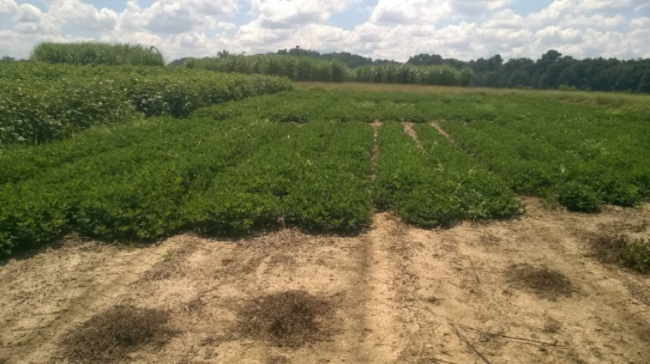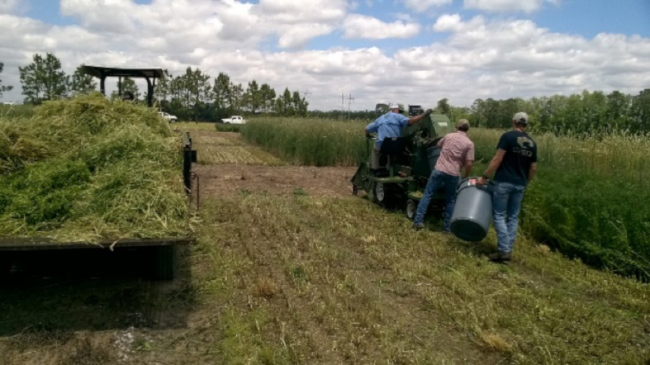Photo Carousel Links
In the U.S., peanuts are most commonly used to produce peanut butter or snack foods. Our research has improved resistance to drought, diseases, and nematodes that affect yield and quality.
•Evaluate the production potential of lupin with and without rye for bi-product feedstocks as winter cover crops.
•Evaluate the effect of the cover crops on production of summer rotation crops and soil characteristics
The Crop Genetics and Breeding Research Unit is improving diverse grasses that include bermudagrass, napiergrass, centipedegrass, and sweet sorghum.
Mission
The mission of the Crop Genetics and Breeding Research Unit is to conduct research to solve agricultural and environmental problems of regional and national interest. To fulfill this mission, the Unit will: (1) collect, evaluate, develop, preserve and distribute germplasm with improved biological and agricultural characteristics; (2) develop new and improved breeding methods, genetic populations, breeding lines and cultivars to enhance agricultural production and efficiency; (3) develop new and improved management practices that increase yields, minimize production and utilization losses, and enhance environmental quality; and (4) develop pest management strategies that are economical, sustainable and environmentally sound. Research is conducted on warm-season grasses for forage, turf, and bioenergy; corn; peanut; pearl millet and sorghum. The Unit will conduct basic, developmental and applied research to establish principles and practices that are transferred to industry.



